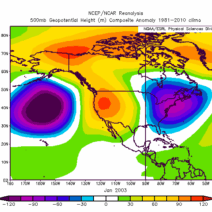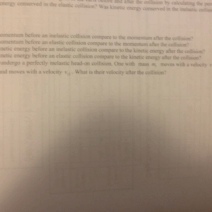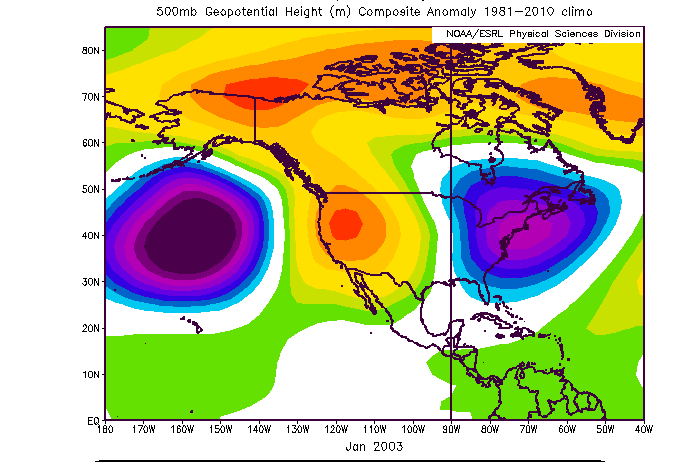As climate change continues to weave its intricate tapestry across the globe, one might ponder: How can a warming planet lead to more severe winters, filled with cold snaps and storms? This paradox of “Winter’s Wicked Twist” is not as confounding as it might appear. In fact, the interplay between global warming and winter weather patterns presents both a troubling reality and a challenging perspective for society to grapple with.
The prevailing narrative around climate change often revolves around rising temperatures and chronic droughts. However, the phenomenon known as “polar vortex” has emerged as a significant player in the evolution of winter weather. The polar vortex, a large area of low pressure and cold air surrounding the Earth’s poles, is intricately linked to how Arctic climate impacts weather patterns far beyond its icy borders.
When the polar vortex remains stable, cold air is contained around the Arctic region. However, as global temperatures rise, the vortex can become destabilized due to diminishing sea ice and increased warmth in the Arctic. This leads to disturbances that send frigid Arctic air spiraling southward, often resulting in brutal cold snaps in mid-latitude regions. In this context, it becomes clear: as the world becomes hotter, the mechanisms producing cold and stormy winters may intensify.
Consider the implications of this phenomenon at both a micro and macro level. When the cold air plummets south, it collides with warmer, moist air, creating an ideal environment for tempestuous winter storms. Such occurrences are becoming increasingly frequent and severe. Events like snowstorms and ice storms are no longer uncommon, posing significant risks to infrastructure, transportation, and economic stability. One can contemplate: Is the warming climate throwing a party that only winter gets invited to?
Moreover, the repercussions of such weather patterns ripple throughout ecosystems. Wildlife, sensitive to changes in seasonal cues, may find themselves disoriented. Birds migrating too early or hibernating animals failing to accumulate enough fat can lead to population declines. The interaction among species, breeding cycles, and food availability is all thrown into disarray, raising serious concerns about biodiversity loss and ecosystem health. The foundational question then becomes: How do we balance our accountability toward the planet with our desire for seasonal predictability?
Human communities are not exempt from the complications of winter’s new character. The increased unpredictability of winter weather can place significant strains on energy grids, particularly when demand spikes in the face of bitter chills. As illustrated by recent historical extremes, power outages can result from an overwhelmed infrastructure, exacerbating hazards to health and life. The challenge lies in how quickly society can adapt to this new normal, modifying infrastructure, energy usage patterns, and emergency response strategies to accommodate increasingly volatile winter conditions.
Shifting focus to agricultural sectors, farmers face their own set of trials with unpredictable winter weather. Early frosts can damage crops that were sowed too soon, and once-promising growing seasons can turn chaotic with extreme weather swings. Agronomists and farmers alike must innovate approaches to produce food sustainably. They must anticipate not just the next season’s needs but also continually adapt to the evolving climate matrix—an endeavor rife with both obstacles and opportunities.
Research indicates that the severity and frequency of winter storms are likely to continue increasing as the Earth’s climate warms. As such, combating climate change becomes not merely an environmental concern but an all-encompassing imperative—entailing the economy, public health, and global security. This calls for a multifaceted strategy that includes reducing carbon emissions, furthering renewable energy adoption, and fostering resilience in communities suffering from climate-related disruptions. How equipped are we to face the brewing storms that threaten our stability?
Moreover, the unpredictability of winter storms raises crucial questions about climate justice. Vulnerable communities, often disproportionately affected by climate change, face the brunt of harsh winter weather with fewer resources for recovery. Initiatives to build resilient infrastructure and promote equitable access to emergency services become paramount as we choose to engage more deeply with the pressing issues at hand. It illuminates a stark truth: as winter becomes wilder, solidarity and proactive stewardship of our environment must flourish.
In sum, understanding the paradox of “Winter’s Wicked Twist” reveals the complex interplay between global warming and winter’s atmospheric dynamics. Rising temperatures may seem, at first glance, to promise balmy winters, yet winter storms may present a more dire reality. They become not only a manifestation of extreme weather but also a mirror reflecting our societal readiness to confront multifarious challenges. The central inquiry transcends mere curiosity; it demands action and collective responsibility. To navigate the coming winters, humanity must rise to the occasion, transcending simple weather observations to cultivate a robust, sustainable, and equitable way of living in a warming world.
The adventure of facing this changing climate is no longer just a scientific curiosity but a societal obligation. As we traverse this thawing yet tumultuously cold landscape, our collective response will determine not just our immediate survival, but the legacy we leave for generations to come. The challenge is formidable, but so too are our capacity to adapt and innovate.






